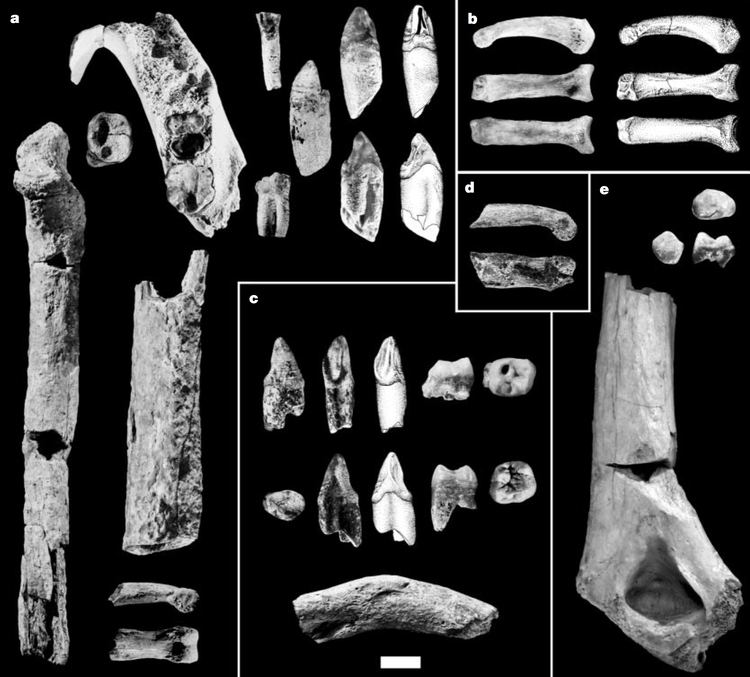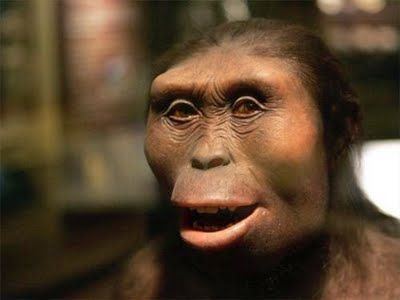Scientific name Ardipithecus kadabba Rank Species | ||
 | ||
Genus ArdipithecusWhite, 1994 Similar Ardipithecus, Orrorin, Ardipithecus ramidus, Great apes, Australopithecus garhi | ||
Ardipithecus kadabba
Ardipithecus kadabba is the Scientific classification given to fossil remains "known only from teeth and bits and pieces of skeletal bones," originally estimated to be 5.8 to 5.2 million years old, and later revised to 5.77 to 5.54 million years. According to the first description, these fossils are close to the common ancestor of chimps and humans. Their development lines are estimated to have parted 6.5–5.5 million years ago. It has been described as a "probable chronospecies" (i.e. ancestor) of A. ramidus. Although originally considered a subspecies of A. ramidus, in 2004 anthropologists Yohannes Haile-Selassie, Gen Suwa, and Tim D. White published an article elevating A. kadabba to species level on the basis of newly discovered teeth from Ethiopia. These teeth show "primitive morphology and wear pattern" which demonstrate that A. kadabba is a distinct species from A. ramidus.
Contents

The specific name comes from the Afar word for "basal family ancestor".
Name

The name of the genus, Ardipithecus, is partly derived from the Afar language (ardi = soil) and partly from the Greek language (from "πίθηκος," ancient Greek pronounced "Píthēkos" = monkey). The epithet 'kadabba' comes from Afar and refers to the father of a family. Ardipithecus kadabba accordingly means mutatis mutandis "progenitor of the ground ape."
Habitat

The first description suggested that Ardipithecus kadabba lived in a habitat that consisted of forests, wooded savannas, and open water areas, as had been described for Sahelanthropus.
Specimen
The type specimen is a right mandibular fragment with a resulting molar (M3) and five tooth or root fragments with the inventory number ALA-VP-2/10. The first description, in 2001, also relied on other bone finds that have been excavated since 1992 from five sites in the Afar Depression, Ethiopia, and are from ten other individuals. In the first description by Yohannes Haile-Selassie, Ardipithecus kadabba was, however, recognized as a subspecies of Ardipithecus ramidus termed "kadabba". In 2004 Ardipithecus kadabba was designated in a joint publication of Haile-Selassie and Tim White.
This correction of the initial allocation of the fossil record was based on the argument that Ardipithecus kadabba had more "primitive" features than other Ardipithecus fossils. Ardipithecus kadabba thus also has a greater similarity with the genera Sahelanthropus and Orrorin. These statements were based on additional bone finds that came to light in November 2002 and were dated at 5.8 to 5.6 million years.
At the same time, it was emphasized that no evidence could be found of "honing", traces on the teeth that arise when the canines rub against each other when biting, constantly sharpening their peaks, which has been found in all older finds. The loss of this feature has been used for the allocation of discoveries in that line of development of great apes that led to the australopithecines and the genus Homo.
Finally, it was noted in the same publication that Ardipithecus, Sahelanthropus, and Orrorin could potentially be associated with a single genus. In 2008 Bernard Wood and Nicholas Lonerga pointed out that the substantially different features of the dentition of Ardipithecus kadabba make its assignment to the early Homini as less well justified than those of other taxa.
